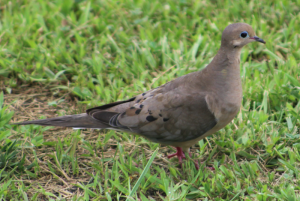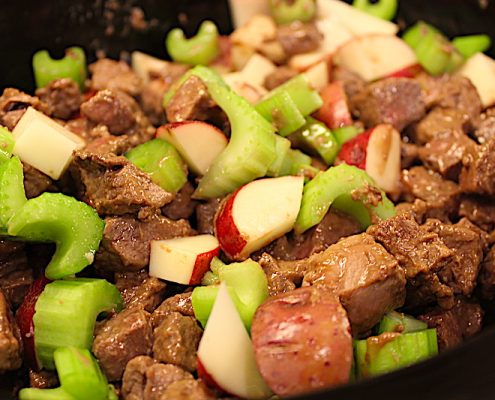Scouting a Dove Field
Scouting a dove field is an essential step in having a successful dove shoot. First of all, you need to know if doves are even using the field, and how much longer the field will be attractive to them. Furthermore, you’ll need to figure out where doves are coming from, and what features of the field are attracting them. Finally, as the hunting season kicks off, and the pressure ratchets up, doves will adjust their activity accordingly. Scouting will give you the knowledge you need to adjust with them. Here are a few things to keep in mind when scouting a dove field. If you have other ideas, let us know in the comments!

Food
Doves are fast flying, acrobatic little birds. As such, they burn tons of calories each day, so food is a primary concern for them. When scouting a dove field, make note of the type and amount of food present. Sunflowers are the most popular crop used to attract doves, but corn or any type of grain work well also.
When scouting, pay attention to the type of food present, the amount, the quality, and the status of the food. A freshly harvested corn field will draw doves more than standing corn, as the harvesting process places corn on the ground where doves can access the kernels. Some farmers will knock down rows of crops, such as sunflowers, to attract the birds in larger numbers. Knowing all the different facts about food will help you choose which field to hunt.
Perches
When scouting a dove field, definitely make note of perches in and around the field. A tall tree with dead, leafless limbs is a prime perching spot for doves. Power lines are always a favorite as well, and doves tend to flock up on power lines in large numbers. If you can identify the perching spots while scouting, you can setup to get more shots as birds approach or leave the perch.
Identifying the perching sites within a field is important, but being aware of perches just outside the field is just as important. If doves are staging on power lines just on the other side of a fencerow, you probably want to setup on that end of the field. If there is a tall dead oak 40 yards back in the woods, doves are likely to land on the branches and observe the field before flying down for a snack. Knowing this will help you determine entry and exit points for doves.
Water
Early dove season is usually blazing hot, and doves need water just like any other animal. If it’s a hot day, and the doves are experiencing hunting pressure in other fields, they’ll be performing lots of fast acrobatic maneuvers to dodge pellets. Consequently, they’ll need access to water to cool down their body.
If a field has a water source, look around it for signs of doves. For instance, a muddy bank will show footprints, and a rocky shore will have feathers and droppings if doves are using it. Plan to setup by the water on hot days when birds are getting pressure, and you’ll get some nice shots at some thirsty doves.
Grit
Doves need grit, or bits of rock and sand, in order to properly digest food in their gizzard. As a result, if a field is attracting doves with food, the birds will be looking for grit as well. A gravel road, sandy shoreline, or just a bare patch of ground can provide doves with access to the grit they crave.
Setting up by food is usually a better plan for killing doves than setting up by grit. But if you are in a bigger field with a smaller number of hunters, the birds will be more spread out and shot opportunities will be sparse. Consequently, the grit location can serve as a choke point for doves that are otherwise scattered across the field. Make note of the grit access spots when scouting a dove field, and keep it in mind for when doves are scattered.
Other Fields
Knowing the location of other fields near you is important to understanding the flight patterns of doves. If other fields are being hunted, then doves will get pushed to your field. What direction will they come from, and where will they likely enter the field? If no one is hunting the other field, then doves will have uninterrupted access to food. As a result, the birds will be drawn more to water and grit sources in your field. Take the time to understand the fields close to your dove field, and you’ll gain a better understanding of dove travel decisions.
If you don’t know whether or not doves are using a field, then you don’t know if you should hunt there. Dove hunting is no different from other kinds of hunting, you still need to do your homework. Scouting a dove field is an easy way to boost your chances for success.
Use the buttons below to share this article with a buddy. Also, follow us on Facebook and Instagram for more content, and subscribe to our newsletter for a monthly checklist of hunting-related activities.



